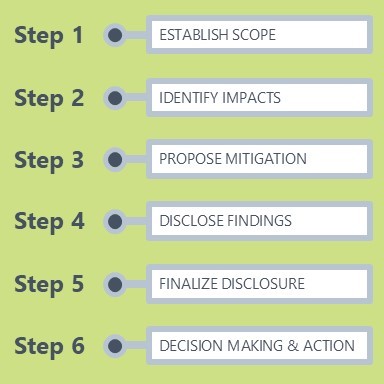SEIS Information
Director of
Community Development
View the Final Supplemental Environmental Impact Statement (Final SEIS) for the City of Sammamish Town Center Sub-Area Plan & Code Amendment Project.
About the SEIS and How It's Used
A SEIS, or Supplemental Environmental Impact Statement, is a document that studies what might happen if specific changes were made and what could be done to reduce or eliminate impacts. The final document is then used as a tool for decision-makers to aid them in deciding how to proceed with a project.
The SEIS & Town Center
In the context of the Town Center Plan & Code Amendment project, the SEIS supplements the Final Environmental Impact Statement (FEIS) for the Town Center Plan, completed in 2007. The FEIS studied several scenarios (referred to as alternatives), one of which evaluated the impacts of building up to 4,000 units.
While this alternative wasn't ultimately selected for the Town Center, the SEIS supplements what was previously studied in the FEIS by looking at how conditions have changed since the 2007 FEIS and analyzing what proposed changes, such as increasing the number of units from 2,000 to 4,000, would do to specific areas identified in the scope, such as housing and transportation.
The SEIS will also identify ways to reduce or eliminate the impacts and study the costs of doing so. This information will then be shared with the public through a draft SEIS (also referred to as a DSEIS), and the public will have the opportunity to comment on whether any impacts have been missed or if any further analysis is required as part of the SEIS.
The findings then become the final SEIS, a tool that the Planning Commission and City Council can use as they consider the proposed updates to the Town Center Plan and development regulations.
SEIS Process
The process follows the Washington State Environmental Policy Act and includes the following steps:

Step 1: Establish the Scope
In this step, decision-makers identify the proposed changes and the areas to evaluate impacts. While asking the public for comments on the scope is not required, it can help decision-makers determine if adjustments are needed to the proposed changes or the areas where impacts should be analyzed.
Step 2: Identify Impacts
As part of the SEIS process, impacts on specific areas, such as schools or public services, are identified and analyzed based on the changes included in the scope.
Step 3: Propose Mitigation
In this step, the impacts found in Step 2 are analyzed for their severity, and actions that can help reduce or eliminate those impacts are identified. Costs for these actions are also provided to aid in decision-making.
Step 4: Disclose Findings
The preliminary findings from Steps 2 and 3 are shared with the public as a Draft SEIS, and comments are collected to determine whether any impacts have been missed or if any further analysis is required as part of the SEIS.
Step 5: Finalize Disclosure
The findings from Steps 2, 3, and 4 become the Final SEIS, a decision-making tool.
Step 6: Decision Making and Action
The decision-makers consider the range of impacts and decide how to proceed with the project.
SEPA Determination of Significance & Request for Comments on Scoping
On January 8, 2025 the City published a Notice of SEPA Determination of Significance (DS) and Request for Comments on Scope of Supplemental Environmental Impact Statement (SEIS). The City determined that the Town Center Plan & Code Amendment proposal will likely have a significant adverse environmental impact, which requires an SEIS.
While not required for an SEIS, the City invited the public to participate in the scoping process and received approximately 200 comments. These comments were shared with the City Council and Planning Commission and helped inform the final scope of the Draft SEIS.
View the SEPA Environmental Checklist.
Comments on Draft Supplemental Environmental Impact Statement and Draft Town Center Plan
A 30-day comment period was held June 9 through July 9, 2025 on the on Draft Supplemental Environmental Impact Statement (DSEIS) and Draft Town Center Plan. The City received nearly 800 formal comments. Formal and informal comments are included in the July 15, 2025 City Council Agenda Packet. When the Final Supplemental Environmental Impact Statement (FSEIS) is issued, it will be updated with the Preferred Alternative and will include all comments received during the comment period, which will be categorized and addressed.

